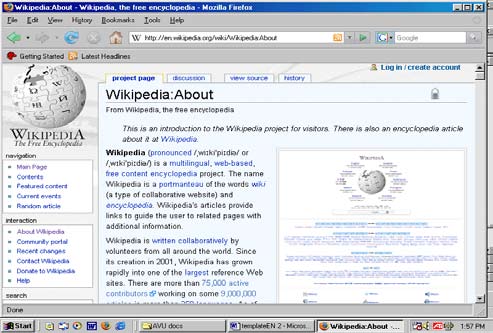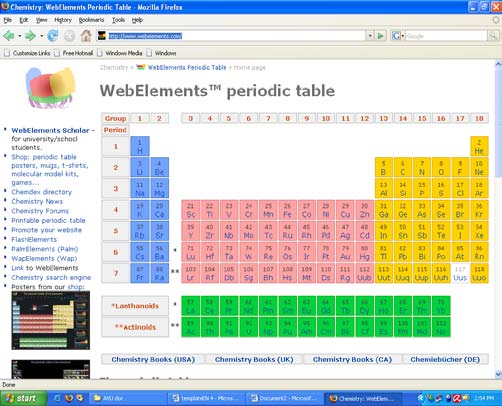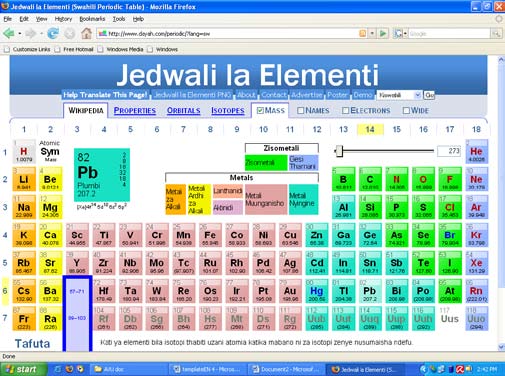3. Fertilizers
4. Water treatments; Many soluble phosphates are used to remove unwanted metal
salts from the water (for many uses); to convert hard water to soft water by remo-
ving the metal ions as insoluble metal phosphates. For much better performance
some organophosphates are used, even though they are much costlier than the
normal inorganic phosphates
5. Phosphates are used in the production of special glasses, such as those used for
sodium lamps.
6. Bone-ash, calcium phosphate, is used to produce fine chinaware and to produce
monocalcium phosphate used in baking powder.
7. Important in the production of steels, phosphor bronze, and many other pro-
ducts.
8. Na PO is important as a cleaning agent, as a water softener, and for preventing
3
4
boiler scale and corrosion of pipes and boiler tubes
9. Pesticides.
10. Daily use; Phosphorus compounds can be found in tooth pastes (cavity protection
or tartar control), in shampoos (Head&Shoulder) and many more commonly used
items
African Virtual University 0
Group 16
This group is made of (oxygen, sulfur, selenium, and tellurium). We will concentrate
on the uses of Oxygen, and sulfur. On your own, kindly get to know the uses of the
other remaining three elements.
Oxygen.
Oxygen was formerly the official standard for the atomic weights of elements. The che-
mists used natural oxygen, a mixture of three isotopes, to which the value of 16.
Quiz. Which element then replaced Oxygen in this standardization?.
Answer ; In 1961 carbon-12 replaced oxygen as the standard.
The most important use of oxygen is for breathing. Animals require oxygen in their
air (or water) to live. Another use for oxygen is for oxidation reactions -- the most
obvious example is burning. Fires require oxygen to burn. Some fire extinguishers
work by preventing oxygen from reaching the burning materials.
Other notable uses are;
1. Oxygen is utilized in medicine in the treatment of respiratory diseases and
is mixed with other gases for respiration in submarines, high-flying aircraft,
and spacecraft.
2. Oxy-acetylene welding
3. Frequently used to aid respiration of patients in hospitals
4. Used in making methanol and ethene oxide
5. Rocket fuel oxidant
6. Steel manufacture
7. Ozone (O ) in the atmosphere is protection against the sun’s ultraviolet rays
3
Sulphur
Most of the sulphur produced is used to produce sulphuric acid, H SO , the most
2
4
important manufactured chemical in the world. Sulphuric acid has many uses, inclu-
ding for the synthesis of fertilisers and polyamides. It is used in batteries («battery
acid»).
Additionally, Sulphur finds use in;
1. In the manufacture of sulphur dioxide and sodium sulphite which are used for
bleaching straw and wood fibers, and for removing lignin from wood pulp for
the paper industry,
2. In the manufacture of organic chemicals, which contain sulphur.
3. Sulphur is a component of black gunpowder (a mixture of potassium nitrate,
KNO , carbon, and sulhur). It is used in the vulcanisation of natural rubber, as
3
a fungicide, and as a fumigant.
African Virtual University 0
4. Sulphur compounds are used in the bleaching of dried fruits and for paper pro-
ducts.
n.B. Selenium and tellurium are often associated with each other. They tend to occur
together in the Earth and have somewhat similar properties. They have many uses in
common. In recent years, some important new uses have been found for selenium.
It is now used in the manufacture of plain paper photocopiers.
Group 17
Comprises F, Cl, Br, I, and At. Chemically, the halogens are too reactive to occur free
in nature. The halogens are probably the most important Group of the Periodic Table
used in industry. However this discussion is mainly be restricted to F and Cl.
flourine
Named and recognized by Andre Marie Ampere of France in 1811 and isolated by
Henri Moissan of France in 1886. Despite blowing a lot of things up, Flourine is
still useful. Fluorine is an essential ingredient in Teflon and Freon (a refrigerant
and propellant). Freon gases are the ingredients in aerosol containers, which may be
damaging the ozone layer in the atmosphere by changing ozone (O ) to oxygen (O ).
3
2
Soluble fluorides are very lethal. Small quantities taken over a period of time produce
fluorosis: hypercalcification of bones, permanent stiffness of the spinal column, and
stiff and painful joints. In lesser amounts, fluorine in water can cause a mottling or
irregular browning of people’s teeth. But at one part per million in drinking water,
fluorine causes a substantial reduction in children’s cavities.
In addition, Fluorine and its compounds are used in producing isotopically fractionated ura-
nium (from UF ), commercial fluorochemicals, including many well known high-tempera-
6
ture plastics, and hydrofluoric acid is extensively used for etching the glass of light bulbs, etc.
You’d be dead.
Chlorine
Chlorine is widely used in making many everyday products. It is used for producing
safe drinking water the world over. Even the smallest water supplies are now usually
chlorinated.
It is also extensively used in the production of paper products, dyestuffs, textiles,
pretoleum products, medicines, antiseptics, insecticides (you remember DDT?), food,
solvents, paints, plastics, and many other consumer products.
Most of the chlorine produced is used in the manufacture of chlorinated compounds
for sanitation, pulp bleaching, disinfectants, and textile processing. Further use is in
the manufacture of chlorates, chloroform, carbon tetrachloride, and in the extraction
of bromine.
Organic chemistry demands much from chlorine, both as an oxidizing agent and in
substitution, since it often brings many desired properties in an organic compound
when substituted for hydrogen, as in one form of synthetic rubber.
African Virtual University 0
As for the remaining members of the group, bromine is used in photographic chemi-
cals, dyes, fire retardants and in pharmaceutical products. Iodine compounds are used
in producing iodized salt, photographic chemicals and in medicines and is required
in human body in order to make the hormone thyroxin
Group 18
All the gases He, Ne, Ar, Kr, and Xe are relatively uncreative and occur in the atmos-
phere. Here we discuss, He, Ar, and Xe.
Helium;
1. Helium is used to fill balloons, blimps, pressurize liquid fuel in rockets.
2. Helium and argon are used in arc welding and metallurgical processes to
protect materials from reacting with nitrogen and oxygen in the air
Argon
Argon finds application in:
1. Used in electric light bulbs and in fluorescent tubes at a pressure of about 3
mm, photo tubes, glow tubes, etc.,
2. Used as an inert gas shield for arc welding and cutting, blanket for the pro-
duction of titanium and other reactive elements.
3. Protective atmosphere for growing silicon and germanium crystals ,lasers, light
bulbs electric light bulbs and fluorescent tubes, photo tubes, glow tubes,
4. welding, cutting, as a protective gas for other substances,
5. Argon fills incandescent light bulbs. This gas replaces the oxygen-rich air that
corrodes the Tungsten filament and causes blackening of the bulb.
6. Argon provides the atmosphere for growing crystals to be used in the semi-
conductor industry, such as Silicon and Germanium.
7. Argon is used in dating rocks with a process called Potassium-Argon dating.
By comparing the amount of K-40 to Ar-40, the age of rocks can be found.
The larger the ratio of Argon to Potassium, the older the samples.
8. Argon is also used in radio tubes and Geiger counters (the probe that senses
radiation is made of Argon), as well as an inert atmosphere for arc-welding
metals like aluminum and stainless steel.
Xenon.
1. used in making electron tubes, stroboscopic lamps, bactericidal lamps, and
lamps used to excite ruby lasers for generating coherent light.
2. used in the atomic energy field in bubble chambers, probes, and other appli-
cations where its high molecular weight is of value.
3. potentially useful as a gas for ion engines.
4. the perxenates are used in analytical chemistry as oxidizing agents
African Virtual University 0
5. Xenon can also be used in flash cameras and “high-intensity” lamps for pro-
jecting movies.
6. It has most recently been used to replace the halogen in the headlights. Xenon
was found to be more efficient and brighter.
PROJECT
Since most of the elements/minerals in our neighbourhood occurs as earth/soil
deposits, in not more than 1000 words, write how {i.e. medicinal, cosmetics, lei-
sure, ceremonies etc} your country/community uses the soils/mineral deposits.
Kindly give a brief description of the physical appearances of the mineral or soil.
It be presented as a joint write up for people from one community or country but
submitted separately [This will account for 5% of your grade in this unit]
Problem set Unit 5 (accounts for 10 %).
1. which group is for elements that are best extracted by electrolysis, which one is
not ?
a) Na, Mg, Al,
b) Pb, Sn,
C, c) Li, Mg, K,
d) Ca, K, Cs
2. For Down’s method to be used for extraction of K
a) current must be increased, b) operational temperatures must be increased,
c) the walls must be made more inert, d) no modification is required.
3. In Downs’ method, CaCl is added to so that
2
a) the boiling point of CaCl is lowered, b) the boling point of NaCl is lowered,
2
c) the fogging is eleiminated in the chambers, d) less heat may be used.
4. Which substance is used as a moderator in a nuclear reactor?
a) Al,
b) C {graphite},
c) helium,
d) Plutonium.
5. Nitrogen containing menerals are not so much in the earth crust because
a) Nitrogen is a light gas,
b) most of its salts are not stable,
c) most of its salts are soluble in water, d) It is only in the atmosphere.
6. 5 points from the project: introduction, chemistry involved, physical characte-
rization of the minerals, relevance and conclusion (1 mark for each)
Answer Key for Unit 5
1) b,
2) b, 3) c, 4) b, 5) c. 6 (see above).
African Virtual University 0
XI. Compiled list of all Key Concepts
(Glossary)
ElECTROnIC COnfIGURATIOn. A summary of the distribution of electrons
about a nucleus, specifying which orbitals these electrons are most likely to
be found.
A mInERAl . is a natural, inorganic crystalline material, which is formed by
geological processes and contains the substance of interest.
An ORE . A mineral which contains a high enough percentage of a metal for
economic extraction is called a metal ore.
VAlEnCE ElECTROnS . electrons in an outer shell of an atom that can
participate in forming chemical bonds. They are easily shared or transferred
during a chemical reaction.
ElECTROnEGATIVITY . is the power of an atom when in a molecule to attract
eletrons to itself..The Pauling scale is the most commonly used. Fluorine (the
most electronegative element) is assigned a value of 4.0.
POlAR BOndS . A bond in which electrons are shared between elements having
a difference in electronegativity of between 0.5 and ~1.5. The bond between
hydrogen and oxygen in water is an example of a polar covalent bond.
EXCTRACTIOn Of ElEmEnTS . The process of obtaining the element(s)
from a mixture or compound by chemical or physical or mechanical means
mETAlS . Simple difination is an element that loses electrons in a chemical
reaction, An example of an alkali metal is sodium.
WATER Of HYdRATIOn . Water chemically combined with a substance in such
a way that it can be removed, as by heating, without substantially changing
the chemical composition of the substance.
InERT PAIR EffECT. The inert pair effect explains why common ions of say
Pb are Pb4+ and Pb2+, and not just Pb4+ as we might expect from the octet rule.
Valence electrons in an s orbital penetrate to the nucleus better than electrons
in p orbitals, and as a result they’re more tightly bound to the nucleus and
less able to participate in bond formation. A pair of such electrons is called
an «inert pair».
PHYSICAl PROPERTIES. Any characteristics of a material that can be obser-
ved without changing the identity of the material itself for example, density,
electrical conductivity, melting points, etc.
African Virtual University
CHEmICAl PROPERTIES . of matter describes its «potential» to undergo some
chemical change or reaction by virtue of its composition. Chemical change
results in one or more substances of entirely different composition from the
original substances. For example hydrogen has the potential to ignite and
explode given the right conditions. This is a chemical property.
CATHOdE. is the terminal where current flows out. To avoid misconceptions,
remember that the anode/cathode distinction is based on current, not voltage.
Anode/cathode is not the same as positive/negative or vice versa. Illustrative
example: for a battery being discharged, the positive terminal is the cathode,
while for the same battery being recharged, the positive terminal is the
anode
CATEnATIOn . The ability of an element such as carbon (C—C), silicon (Si—Si),
tin (Sn—Sn), etc. to form chains. This is because these bonds are very strong
due to the use of some π bonding.
COVAlEnT BOnd(S). An interatomic attraction resulting from the sharing of
electrons between the atoms.
COnTACT PROCESS . A reaction sequence used for the commercial preparaion
of sulfuric acid.
dIAmAGnETISm . The physical roperty of of bieng repelled by a magnetic
field.
EXCITEd STATE . The state of one atom in which atleast one electron is not in
the lowest possible energy level.
.
African Virtual University
XII. Compiled list of Compulsory Readings
Unit 1.
Properties Of Periodic Table Elements
Complete reference
PDF file : name; Reading 1.
Abstract : The file introduces the learner to the basics of inorganic chemistry where
electronic configuration and the orbital designations such as s, p, d, and f and their
relative energies are the central theme. The rules that govern the electronic distribution
are also introduced. Further it briefly outlines how to use Excel computer program to
graphically monitor trends in both physical and chemical data values of the periodic
table elements.
Rationale : Since the students come from different academic backgrounds, the site
seeks to bridge that gap that may exist among the students by graphically presenting,
from first principles, the electronic configuration of elements. The symbols of elements
and their names are also presented so that the learner does not agonize on the identity
of the elements. To fully appreciate the meaning of data associated with physical
and chemical changes for the periodic table elements, Excel program is handy and
graphical presentation of these changes is therefore paramount.
Unit 2.
Atomic Structures and trends in S and P Block elements
Complete reference :
PDF file, Name: Reading 2.
Abstract : The file introduces how to measure the atomic and ionic sizes and the
units of such measurements. The inherent differences between cationic and anionic
sizes compared to their corresponding atomic sizes are also discussed. Also included
are definition of the melting and boiling points.
Rationale: This site makes it possible to, in depth, appreciate the different methods
of determining the atomic and ionic radii of elements. Usually, the minuteness of the
atomic scale used in measurements of atomic and ionic radii is incomprehensible to
beginners. This document lividly connects those atomic units to the common SI – units
we are used to. Lastly, for the intension of showing, as in other fields of science, that
chemistry retains common definition of some terms, this unit defines melting and
boiling points of elements and briefly discusses how to determine them.
African Virtual University
Unit 3.
General Properties of S and P Block Elements
Complete reference:
PDF file, Name: Reading 3.
Abstract: This reading begins with the definitions and examples for Oxidation states
of various elements in as a affected by the position of the elements in the periodic
table. Highlighted next is the details of how to name the common elements and their
chemical compounds. Here, both common and IUPAC naming criteria for the com-
pounds are illustrated. At the end, the meaning and examples of both physical and
chemical changes a substance can be subjected to are included.
Rationale: Since unit 3 deals with General Properties of S and P Block Elements,
to understand the contents of the unit, the learner needs to have the knowledge of
Oxidation states of any elements as a function of the elements position in the periodic
table. Naturally, any learner would be interested in knowing how to name the chemical
compounds they encounter in the course of this module. Such are the details included
in the document. Lastly, defining with examples both physical and chemical changes
would make Unit 3 more understandable to the learner.
UNIT 4 & 5
Occurrence, abundance, Extraction and Economic uses
of s and p block elements.
PDF file, Name: Reading 4.
Abstract: The document introduces the meaning of the terms ore and minerals and
other related terminologies. The next bit deals with the term extraction and all the
considerations that are important for commercial exploitation of any mineral ore.
Lastly, an exhaustive name list of major ores and minerals is attached.
Rationale: The section takes the learner on a tour of the terminologies associated with
ores and mineralogy and extraction as a process. Since most of these terminologies
are derived from fields other than chemistry, their mastery is usually a challenge to
majority of young chemists. In addition, for good appreciation of details on extrac-
tion of minerals, the issues limiting such exploitation must be known to the learner.
Included here too is a comprehensive name list for ores and minerals of common
elements. The document is aimed at making mastery of both Units 4 and 5 easier to
the learner.
African Virtual University
XIII. Compiled list of Useful links
Useful Link #1
Title : PERIODIC TABLE OF ELEMENTS
URl : http://en.wikipedia.org/wiki/Periodic_table
Screen capture :
description: Wikipedia is a multilingual, web-based, free content encyclopedia
project. Wikipedia’s articles provide links to guide the user to related pages with
additional information. Periodic as the most used root to understanding the chemistry
inorganic substances is well presented here.
Rationale: The students will find this site useful, for one, it is frequently updates
and besides is free. It containns relevent examples, questions and discussions that
are strongly required for successfully completion of this course.
African Virtual University
Useful Link #2
Title : ORGANIZATION OF THE PERIODIC TABLE.
URl : http://www.webelements.com/
Screen capture :
description: This site, which was developed for higher level chemistry students
explains the periodicity of the elements in the periodic table. The site enables one to
browse for different properties (both physical and chemmical) of any one selected
element. It underscores the Aufbau principles, shows where s, p, and d block s are in the
periodic table and includes properties associated with elements of a given group.
Rationale: This site is core to the module. We undestand things better when they are
presented graphically and in colours, and that is what is in this site. The organization
of the periodic table is well illustrated and vividly brought to life in relevent colours.
In addition, the site dwells on the such properties of elements as electronativity, atomic
radii, etc, that comprise the major part of this module.
African Virtual University
Useful Link #3
Title : PROPERTIES OF ELEMENTS
URl : http://www.dayah.com/periodic/
Page 1 Page 2 Page 3 Page 4 Page 5 Page 6 Page 7 Page 8 Page 9 Page 10 Page 11 Page 12 Page 13 Page 14 Page 15 Page 16 Page 17 Page 18 Page 19 Page 20 Page 21 Page 22 Page 23 Page 24 Page 25 Page 26 Page 27 Page 28 Page 29 Page 30 Page 31 Page 32 Page 33 Page 34 Page 35 Page 36 Page 37 Page 38 Page 39 Page 40 Page 41 Page 42 Page 43 Page 44 Page 45 Page 46 Page 47 Page 48 Page 49 Page 50 Page 51 Page 52 Page 53 Page 54 Page 55 Page 56 Page 57 Page 58 Page 59 Page 60 Page 61 Page 62 Page 63 Page 64 Page 65 Page 66 Page 67 Page 68 Page 69 Page 70 Page 71 Page 72 Page 73 Page 74 Page 75

















